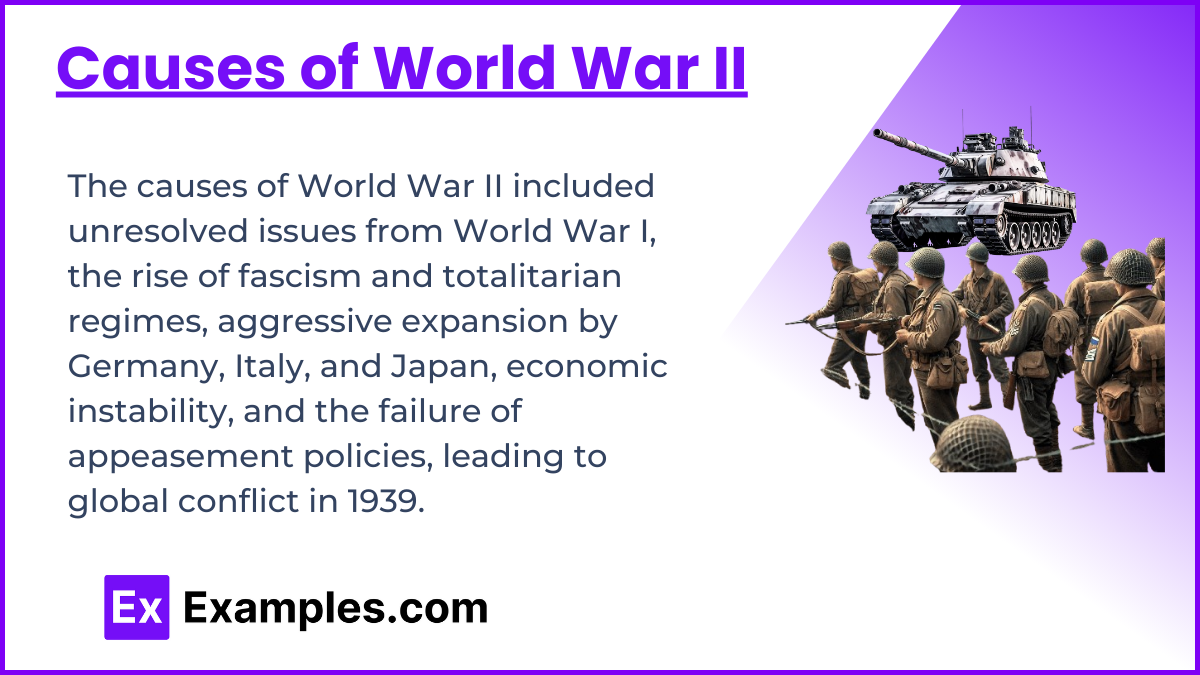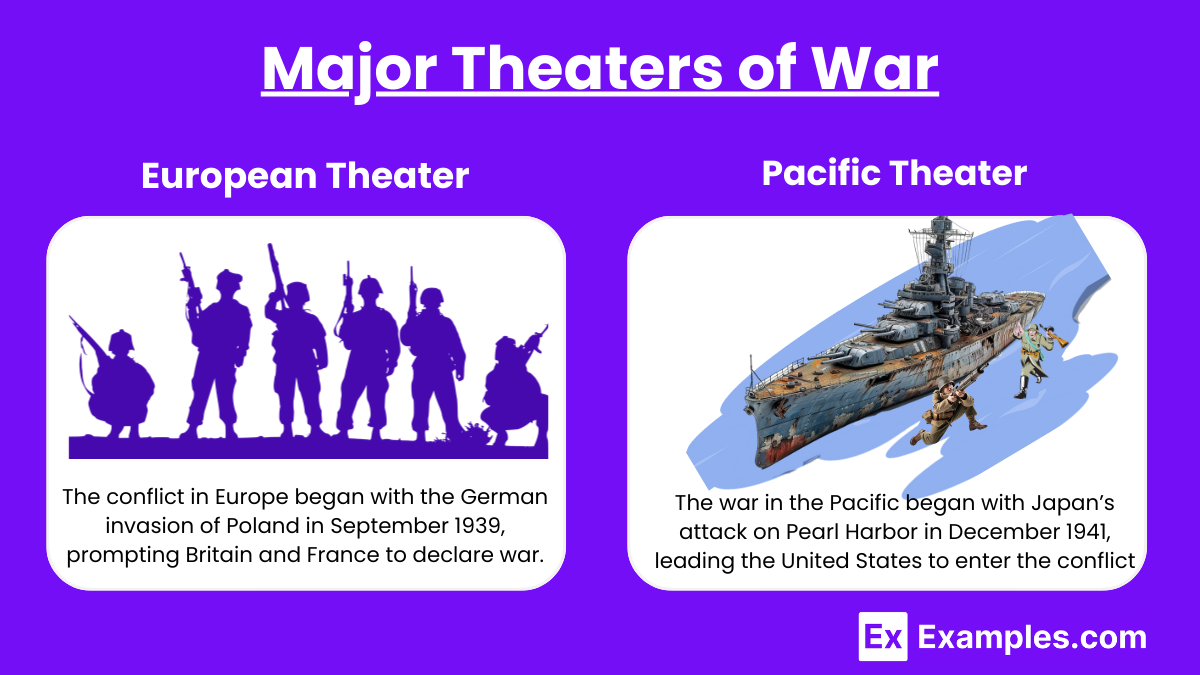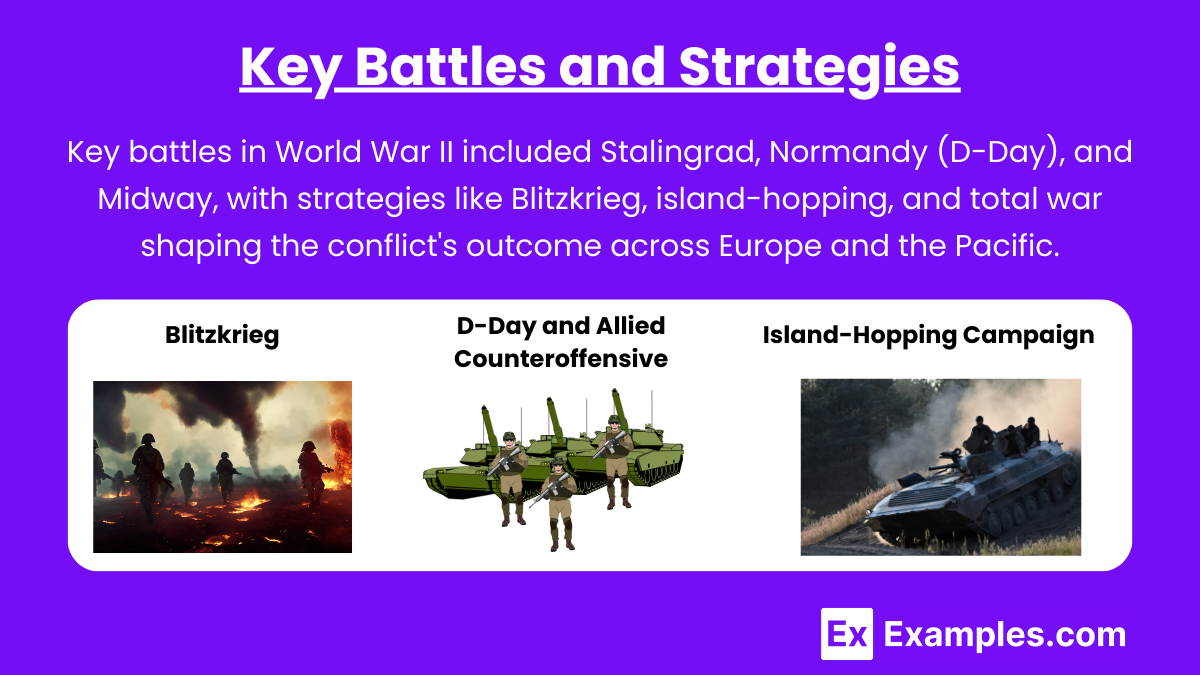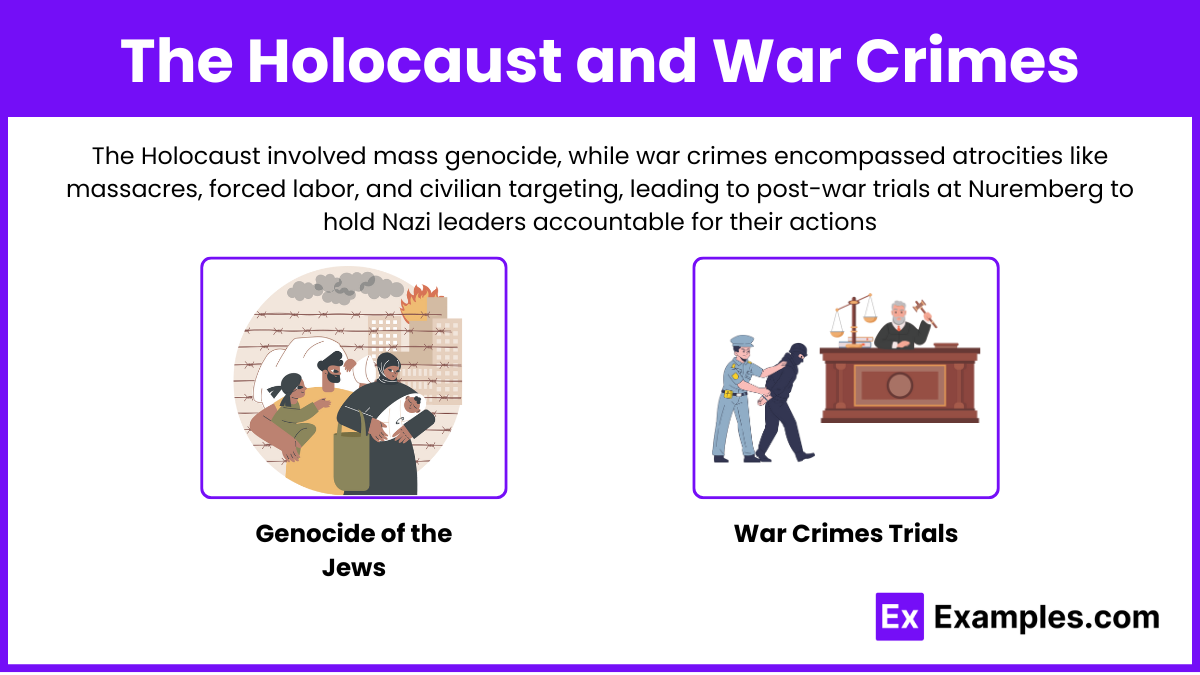World War II (1939-1945) was a global conflict that reshaped international relations and societies. Its causes stemmed from unresolved issues of World War I, economic turmoil, and aggressive expansionist policies. The war was characterized by major battles across Europe and the Pacific, resulting in unprecedented destruction and the emergence of the United States and the Soviet Union as superpowers.
Learning Objective
In studying World War II: Its Causes and How It Was Fought for AP World History: Modern, you should learn to identify the key causes of the conflict, including the effects of World War I, analyze major battles and strategies, and evaluate the global impact of the war on societies, economies, and international relations.
1. Causes of World War II

The causes of World War II included unresolved issues from World War I, the rise of fascism and totalitarian regimes, aggressive expansion by Germany, Italy, and Japan, economic instability, and the failure of appeasement policies, leading to global conflict in 1939.
Economic Instability
The Great Depression of the 1930s severely impacted economies worldwide, leading to widespread unemployment and social unrest. Countries like Germany faced hyperinflation and economic despair, creating fertile ground for extremist ideologies.
Treaty of Versailles
The harsh conditions imposed by the Treaty of Versailles after World War I generated resentment in Germany. The treaty’s reparations crippled the German economy and contributed to a sense of humiliation and anger among its populace, facilitating the rise of Adolf Hitler.
Expansionist Policies
Totalitarian regimes in Germany, Italy, and Japan pursued aggressive expansionist policies. Hitler aimed to unite all German-speaking peoples and acquire “Lebensraum” (living space), while Italy sought to restore its former empire and Japan aimed to dominate Asia.
Failure of the League of Nations
The League of Nations, established to maintain peace, failed to enforce its resolutions or prevent aggression. This ineffectiveness was evident during events such as the Japanese invasion of Manchuria and Italy’s invasion of Ethiopia, undermining international stability.
Appeasement
European powers, particularly Britain and France, adopted a policy of appeasement toward Hitler, allowing him to annex territories like the Sudetenland in hopes of avoiding conflict. This only emboldened him, leading to further territorial expansions.
2. Major Theaters of War

European Theater
The conflict in Europe began with the German invasion of Poland in September 1939, prompting Britain and France to declare war. Key battles included the Battle of Britain, Operation Barbarossa (the invasion of the Soviet Union), and the D-Day landings in Normandy.
Pacific Theater
The war in the Pacific began with Japan’s attack on Pearl Harbor in December 1941, leading the United States to enter the conflict. Major battles included Midway, Iwo Jima, and Okinawa, showcasing the brutal nature of the war in this region.
3. Key Battles and Strategies

Blitzkrieg
Germany employed a strategy known as Blitzkrieg or “lightning war,” characterized by rapid, coordinated assaults using air and ground forces. This tactic led to swift victories in Poland and France.
D-Day and Allied Counteroffensive
The Allied invasion of Normandy on June 6, 1944, marked a turning point in the European Theater. The successful landing allowed Allied forces to liberate Western Europe from Nazi control.
Island-Hopping Campaign
In the Pacific, the United States adopted an island-hopping strategy, bypassing heavily fortified Japanese positions to capture strategically important islands, ultimately leading to the proximity of Japan itself.
4. The Holocaust and War Crimes

The Holocaust involved mass genocide, while war crimes encompassed atrocities like massacres, forced labor, and civilian targeting, leading to post-war trials at Nuremberg to hold Nazi leaders accountable for their actions.
Genocide of the Jews
The Holocaust represented one of the darkest aspects of World War II, with the systematic genocide of six million Jews and millions of others deemed “undesirable” by the Nazi regime. This genocide highlighted the atrocities committed during the war.
War Crimes Trials
Post-war, the Nuremberg Trials held key Nazi leaders accountable for war crimes and crimes against humanity. These trials established precedents for international law and justice.
Examples:
Example 1: Rise of Totalitarian Regimes
Countries like Germany, Italy, and Japan adopted totalitarian regimes, promoting militarism and expansionism. These governments sought to regain lost power and territory, directly contributing to the outbreak of war.
Example 2: The Munich Agreement
In 1938, Britain and France allowed Hitler to annex the Sudetenland, hoping to prevent conflict through appeasement. This decision emboldened Hitler and demonstrated the failure of diplomatic efforts to maintain peace.
Example 3: Attack on Pearl Harbor
Japan’s surprise attack on Pearl Harbor in December 1941 prompted the United States to enter the war. This pivotal moment shifted the balance of power, bringing significant American resources into the conflict.
Example 4: D-Day Invasion
The Allied forces launched the D-Day invasion on June 6, 1944, successfully landing in Normandy. This operation marked a turning point in the war, leading to the liberation of Western Europe from Nazi control.
Example 5: The Holocaust
The Holocaust exemplified the brutal consequences of Nazi ideology, resulting in the genocide of six million Jews and millions of others. This atrocity highlighted the moral dimensions of World War II and its aftermath.
MCQs
Question 1
Which event directly prompted the United States to enter World War II?
A) The invasion of Poland
B) The signing of the Munich Agreement
C) The attack on Pearl Harbor
D) The Battle of Britain
Answer: C) The attack on Pearl Harbor
Explanation
The attack on Pearl Harbor on December 7, 1941, was a surprise military strike by the Japanese Navy against the United States naval base in Hawaii. This attack resulted in significant losses and galvanized American public opinion in favor of entering the war, leading to a formal declaration of war against Japan the following day. The other events listed were significant but did not directly involve U.S. entry into the war.
Question 2
What was one of the main purposes of the Munich Agreement in 1938?
A) To end World War I
B) To allow Germany to annex Austria
C) To prevent another war by appeasing Hitler
D) To establish the League of Nations
Answer: C) To prevent another war by appeasing Hitler
Explanation
The Munich Agreement was a settlement reached between Germany, Britain, France, and Italy that permitted German annexation of the Sudetenland in Czechoslovakia. The agreement aimed to avoid war through appeasement, but it ultimately failed, as it only emboldened Hitler to pursue further territorial expansions, demonstrating the ineffectiveness of appeasement in maintaining peace.
Question 3
Which military strategy was employed by Germany during its rapid conquests in the early stages of World War II?
A) Trench warfare
B) Blitzkrieg
C) Guerrilla tactics
D) Attrition warfare
Answer: B) Blitzkrieg
Explanation
Blitzkrieg, or “lightning war,” was a military strategy utilized by Germany that emphasized rapid and coordinated attacks using combined air and ground forces. This approach aimed for quick victories and the element of surprise, allowing Germany to swiftly conquer Poland, France, and other territories early in the war. This strategy contrasted with the prolonged and static nature of trench warfare seen in World War I.


